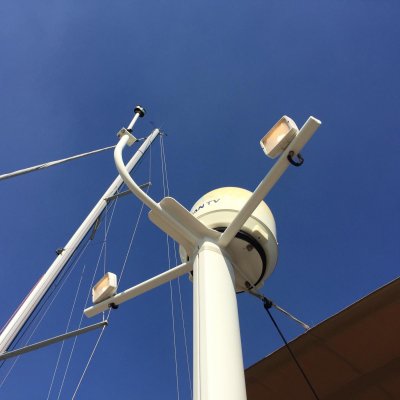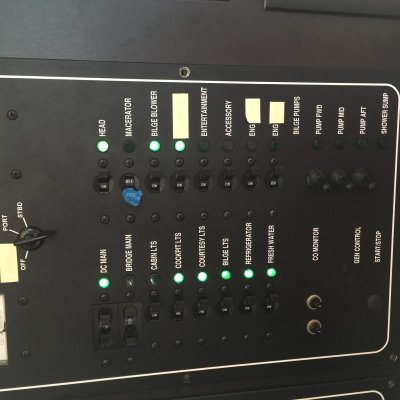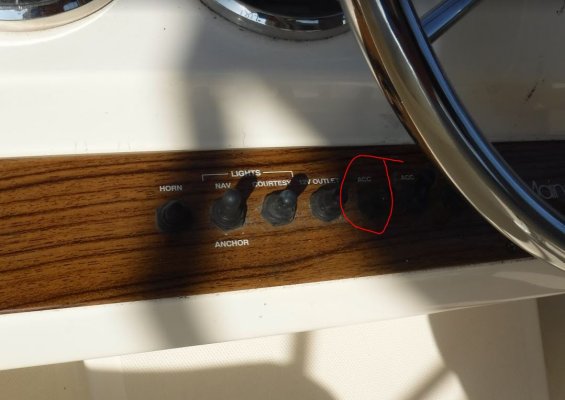That is not factory. In fact, Mainship actually does an excellent job of wiring. It is very easy for a DIY who isn't familiar with 12V to accidentally make the bus on the bridge 'hot' by wiring a positive to the wrong side of the bus (inbound side rather than outbound side).
I would be dissecting the upper helm wiring. When this occurs, it is almost always done with a gauge of wire that is only sized for a single circuit, not the entire helm.
If you always turn on the upper bridge breaker, then the draw comes from the main positive that feeds the bridge. However, if you forget, then you could over load the circuit that is accidentally feeding the bridge.
I would make this project a priority because I strongly suspect this is not wired correctly.
On my boat it was done at the factory, or possibly the dealer. My boat had one owner prior to us, he basically never used the boat in 8 years (160 hours on the engines) and made zero additions, repairs or upgrades. Heck, the plastic wrap was still on the mattress. I know that I haven't made that modification either. I guess it is possible that the electronics installer may have done something like that when the boat was new. I've had to go back and clean up a few things that were kind of funny with that. Ie, the autopilot control head and brain stayed on all the time, there was no switch wired into the system.
I've never worried about it too much, I just leave the bridge main breaker on. The DC main doesn't override the bridge main on my boat either.
I get what you are saying though, and see how it could be an issue. I'll take a look at it. Thanks for the heads up.
My biggest issue with Mainship's rigging is that they rigged every boat the same. My boat has miles of factory installed unused wiring in it. Most of the switches on my upper helm (radar, loran, depth etc.) are wired but aren't used. Also, the rigging tube from the ER to the FB is a terrible design. Accessing the lower end is really tough, and the tube is CRAMMED with wire, much of it unused as per my above. I had a devil of a time running a transducer cable up there when I replaced my electronics.
My cabin lights are also wired kind of squirrely. The wall switch in the fwd cabin for the overhead lights doesn't do anything at all. It's got wires running to it, and when I check it for continuity it is functioning, but the lights turn on and off at the fixture no matter which position the wall switch is in. Even with the switch not installed they still work, so it's obviously not part of the circuit. Tracing the wiring would involve tearing up the walls and headliner, so I just live with it.
There is an AC outlet in the summer kitchen. My boat didn't come with an electric grill in the summer kitchen though there is a breaker for one on my panel. I assume the grill plugs into that outlet, so the breaker should turn it off, but I can't find that the breaker does anything at all and the summer kitchen outlet is tied in with the "outlets 2" breaker.
There is a wired sender on the port fuel tank, but it's not tied to the fuel gauge, only the stb tank is wired to the gauge, so there is no way to tell how much fuel is in the port tank which is problematic because the genset pulls from that side. I could open the crossover valve and treat both tanks as one big one, but I prefer not to do that.
It's stuff like that that makes me say the wiring is less than ideal. Maybe my boat was rigged by the B team in St. Augustine.



